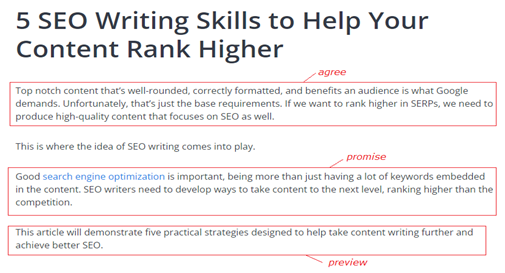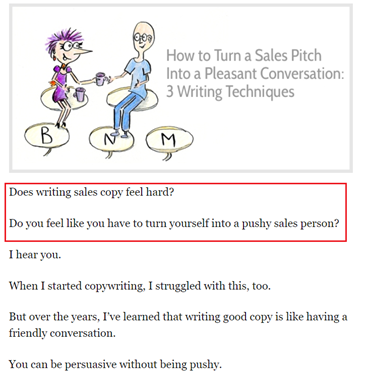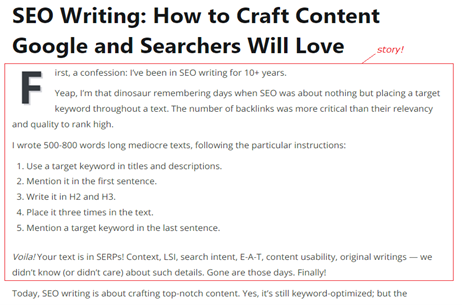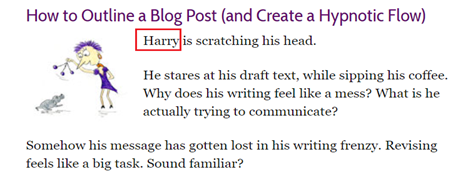If you’ve ever struggled with writing captivating blog post introductions that hook your readers from the very beginning, then you’re in the right place. In today’s fast-paced digital world, where attention spans are shorter than ever, a compelling introduction is the key to capturing your audience’s interest and keeping them engaged throughout your entire article.
That’s why we’ve compiled this list of seven foolproof formulas to help you craft irresistible blog post introductions. Whether you’re a seasoned writer looking to enhance your skills or a beginner seeking guidance, these tried-and-true techniques will empower you to create introductions that leave a lasting impression on your readers.
From the art of storytelling to posing thought-provoking questions, we’ll explore various strategies that are guaranteed to captivate your audience and make them eager to dive deeper into your content. We’ll also discuss the importance of understanding your target audience and tailoring your introduction to their specific needs and interests.
So, if you’re ready to take your blog post introductions to the next level and convert casual readers into devoted followers, let’s dive into these seven foolproof formulas and unlock the secrets of writing engaging introductions that will keep your audience hooked from the very first sentence.
Importance of emphasize introductions
If readers scan the content, then why bother with intros?
Readers who encounter challenging-to-scan intros that miss the what’s-in-it-for-me information may stop scanning altogether. Done well – with good hooks – an introduction can turn a scanner into a reader.
A good introduction:
- Sets expectations.
- Excites the audience, so they keep reading.
- Lets the audience know what they will get later in the content.
Best Formulas for Write a Engaging Blog Post Introduction
These seven formulas can help you achieve those good intro goals.
1. Agree, promise, preview (APP)
The APP formula does it best for a search audience so they know you can deliver what they want. Here’s how it works:
- Provide the information (a problem) a target reader would agree
- Promise a solution to that problem.
- Preview your content so they understand what they’ll get when reading.
SEO expert Brian Dean of Backlinko is the author of this method. He often uses it in his blog posts as it lets him keep intros concise, straightforward, and appealing. I used APP in this guest post for Woorank:
- Agree: “Top-notch content that’s well-rounded, correctly formatted, and benefits an audience is what Google demands. Unfortunately, that’s just the base requirements. If we want to rank higher in SERPs, we need to produce high-quality content that focuses on SEO as well.”
- Promise: “Good search engine optimization is important, being more than just having a lot of keywords embedded in the content. SEO writers need to develop ways to take content to the next level, ranking higher than the competition.”
- Preview: “This article will demonstrate five practical strategies designed to help take content writing further and achieve better SEO.”

2. Attention, interest, desire, action (AIDA)
Among the most common copywriting techniques, AIDA works well for sales content, evoking the desire to purchase and pushing potential buyers to take action. It also works well for intros because it can:
- Grab the reader’s attention in the first sentence.
- Appeal to their interest by saying something new to them.
- Evoke the desire to learn more, explaining how they’ll benefit from the content.
- Invite them to take action (keep reading).
- Attention: “Content marketers spend a lot of time pondering the question, ‘Will copywriters be replaced by AI?’ They often conclude writers don’t need to worry.”
- Interest: “But you would benefit more if you asked a different question: …”
- Desire: “ … ‘How can content writers work in a world that includes AI-created content?’”
- Action: “Take steps today to ensure your work and skills can’t be replaced by a robot.”

3. Preview, proof, bridge (PPB)
Backlinko’s Brian Dean also uses this formula to engage users from the first sentence and clarify whether the content is worth reading:
- Preview your content asset.
- Provide proof why it’s worth further investigation.
- Add a bridge (a short transition phrase to keep readers glued and get them to the next paragraph).
Brian’s article on blog promotion uses the PPB method:
- Preview: “In today’s post, I’m going to show you exactly how to promote your blog.”
- Proof: “These are the same strategies that I used to grow my blog to 449,058 monthly visits.”
- Bridge: “Let’s dive right in.”

4. Short, pain, yay (SPY)
People don’t want to work hard to understand your content. Don’t frighten them with complicated sentences and long paragraphs in the introduction. Make it visually readable, punchy, and easy to digest.
Start with a short sentence that hooks the audience. How do you know what hooks readers and grabs their attention? Ask an intriguing question. Make a controversial statement. Use a quote or incorporate statistics. Include a surprising fact.
The only rule? Say something that will yay the audience – something unusual and unexpected. Whether you use a question or a statement, make it sound odd enough for readers to crave more. To cement the effect, refer to a pain point your readers might have. Communicate awareness of your targets’ problems, and you’ll gain their sympathy.
The SPY formula includes the following:
- Start with a short
- Address a pain point.
- Hook with a yay info (say something unusual or unexpected).
Helen Boss demonstrates this technique in her article for SmartBlogger:
- Short and yay: “Looking for inspiring ways to use conversion copywriting?”
- Pain point: “… But you’re struggling to understand how to win over visitors quickly before they leave your site. It’s frustrating! And, on top of that, it’s leaving you out of pocket.”

5. Socratic method
I mentioned the Socratic method in my article about neuro writing tactics. Named after the ancient Greek philosopher Socrates, it’s about asking argumentative questions to stimulate curiosity and critical thinking. Perfect to use in content introductions to hook users and create a reading flow.
But it’s not about only asking a question in the first sentence. Use at least two (ideally three) questions in a row. Ensure each is concise and contextually related to the information in the content.
- “Does writing sales copy feel hard?”
- “Do you feel like you have to turn yourself into a pushy sales person?”

Instead of questions, you can post consecutive statements. Choose those your target readers will nod in agreement as they read. It gives them subconscious proof you understand their pain and know how to help.
Brian Clark uses the Socrates statement method in this Copyblogger article in which he says he will share how to:
- Get started
- Cut the fluff
- Finish a draft.

6. Concise yet emotional
The oldy-moldy powerful technique of storytelling engages readers and makes them want to keep reading. Why? Stories activate the experience-related parts of the brain.
Reading or listening to a story immerses the readers who feel more connected and related to the information shared in the story. It also keeps them wanting to see how the story progresses.
Sharing a personal story – reflective writing – in an introduction involves readers. I use this technique on Writing Breeze sometimes. For example, under the headline SEO Writing: How To Craft Content Google and Searchers Will Love, I write: “First, a confession. I’ve been in SEO writing for 10+ years …”

But you don’t have to go personal. You can use the Pinocchios of storytelling – fictional characters to tell a story, create emotional connections, and improve the content experience for your audience. Back to Henneke again in the article, How To Outline a Blog Post (and Create a Hypnotic Flow), who writes:
“Harry is scratching his head. He stares at his draft text, while sipping his coffee. Why does his writing feel like a mess? What is he actually trying to communicate …”

7. Scene-setting
This intro method sets a scene for the readers to prompt their curiosity and help them understand what to expect. It also works well for emerging topics or newsy issues.
With scene-setting, you can:
- Establish a clear position on the issue.
- Highlight the aspects of your content asset.
- Manipulate the reader’s emotions by setting a desired tone from the beginning.
- Address the reader’s imagination and involve them in the process of thinking.
That’s what Lesley Vos does in her article on WordStream:
“There are two magic lands. One is the land of friendly grain-grower tribes, while the other is a motherland of mean-spirited hunters warring and betraying for profit.
“Can you guess which land is called Grataka and which one is called Lamoniana?”

Scene-setting intros appeal to social instinct, evoke curiosity, and motivate people to keep reading to get the answer and disclose if the assumptions were correct. A well-written scene in an introduction also provides background on the topic, so readers can understand why it’s worth their time.
8. Connect with the Reader Through a Shared Problem
Your readers read your blog because they want to learn something or find a solution. Introduce your post by showing them that you understand their pain and can offer a remedy.
The best way to do this is by stating the problem, then validating the reader’s concerns with cold, hard statistics. Statistics are an objective way to present proof to your statements.
By establishing common ground early, you’ll make it easier for the reader to trust you and stay engaged throughout the post. You can make your stats interesting in a few different ways:
- Add an impressive growth stat (“Instagram has reached XX million users”)
- Research a dollar-based stat (“Most bloggers make $X,XXX per month blogging”)
- Find a stat that shows how many others are dealing with the same problem (“XX% of marketers also struggle with budgeting”)
- Use two stats against each other as a comparison (“XX% of writers swear by using marketing personas, while XX% of customers want more personalization”)
Here’s an example introduction by Expadi.io and a breakdown of their copy. They use an impressive growth stat, emphasize with the reader and show concern about their problem (that LinkedIn outreach is changing).
9. Show Them the Value of Your Post
A blog post’s first impression matters. You only have a few seconds to capture the readers’ attention when they load a post. If the value of your content is not immediately clear, you’ll lose them.
Show them that sticking with your blog is worth their time by promising something that the reader wants. This means providing a clear list of exactly what is covered in your piece, the possible results, and what they can learn from them.
Here’s a simple formula you can use to set up a similar introduction: “In this article, you’ll learn about [content topic] and how to [secondary content topic] in order to achieve [results].”
This formula is best used in combination with other introduction styles (for example, a statistic + empathy + value-add technique).
Uxpressia uses this value-listing technique and then cleverly throws in a call-to-action in the end.
6 Steps To Writing Captivating Blog Post Intros Every Time
Step 1: Address your readers from sentence one
You want people to connect with your content, and you can accomplish that by talking directly to them. Use the word “you,” or directly ask your readers a question.
Through this technique, you create an emotional bond with your audience that they can’t ignore.
On the other hand, when you launch by talking about your own stories and successes, it’s easier to lose readers because they aren’t personally invested in your blog post.
Instead of launching with your own story, pull the reader into it by addressing them right away.
Let’s take an example from Adam Connell. In his post, “The Essential Guide To Must Have WordPress Plugins,” Adam gets around to telling his own story, but only after pulling the reader in.
Imagine he opened with this line:
I’ve built my fair share of websites and tested a lot of plugins in the past. This has led me to creating my own list of go-to WordPress plugins.
It doesn’t exactly capture a reader’s attention off-the-bat, does it? Now take a look at the intro Adam actually wrote:
Have you ever installed WordPress and wondered what plugins you should be installing?
You’re not alone.
There are thousands of plugins you could install which means it can be challenging to choose.
I’ve built my fair share of websites and tested a lot of plugins in the past. This has led me to creating my own list of go-to WordPress plugins.
Now that he’s addressed us and made us part of the story, we feel invested in it, and his own experiences become more credible and interesting to us.
Step 2: Launch by describing an emotion
You want people to feel something with your content, and that’s where describing emotions can come in handy.
The idea here is to identify how your readers feel and get them to say, “This guy understands me. What else does he have in store for me?”
Emotions push your readers to continue reading.
Just some types of emotions you might describe include:
- Frustration
- Excitement
- Admiration
- Love
- Uncertainty
- Stress
- Desire
Most bloggers are already taking this step without realizing it, and it’s actually a lot easier to incorporate into your copy than it sounds. Let’s take a few examples to get a good idea of how to apply this step.
In Elna Cain’s post “How To Do Guest Blogging Right And Grow Your Audience By Leaps And Bounds,” she writes:
Are you brimming with excitement over your new blog?
That’s her intro sentence, and doesn’t it make you want to read more? Of course you’re excited over your new blog! She gets you, and you want to know more about what she has in store for bettering your blog.
Though Elna uses the term “excitement” in her opening statement, you don’t explicitly have to call out an emotion. Here’s an example from Sarah Peterson:
Do you hear that?
The sound of crickets in your comment section.
The radio silence on your Twitter feed.
The deafening sound of a lack of engagement on your blog.
Can you spot what emotion she’s describing?
It’s loneliness.
Sarah never had to come out and say you were lonely, but she elicits a feeling of loneliness anyway.
Step 3: Identify your readers’ problem
Every blog post you write should aim to solve a problem, such as by educating, informing, or entertaining someone. After all, who’s going to read your content if it’s not going to help them?
By explicitly identifying your readers’ problem, they already know that you’re going to help solve it, and that’s going to keep them engaged. Better yet, you’ll captivate the people who didn’t even realize they had a problem worth solving in the first place!
This problem might be lack of knowledge, poor results, wasted time, wasted money, etc.
Let’s take an example from Adam’s post, “How to Get Better Results from Your Content Marketing Efforts.”
We all want our content to get results.
We want more eye-balls on our content and we want that content to convert.
But how can we get the results that we want to get?
Here, our problem is poor results from our content.
Here’s another example from Adam’s post “18 Powerful WordPress Plugins For Bloggers And Content Marketers.”
Have you ever wondered which WordPress plugins could help your content marketing efforts?
Side note: Don’t you love how Adam has incorporated all of our first three steps into one sentence? He addresses the reader by using the term “you,” he describes an emotion (wonder), and he identifies a problem (lack of knowledge in WordPress plugins) all in under 15 words.
Step 4: Play off their hopes and dreams
Now that you’ve identified your reader’s problems, build the excitement by playing off their hopes and dreams. It’s okay to tease your readers a bit at this point. It’s all about building anticipation.
Pose a question about what your readers might want. Tell a story about results successful people have seen in the past. Give a number to how much time or money they dream of saving.
There are numerous ways to apply this step, but it’s easier if I show you a few examples.
Let’s start with a simple one from George Meszaros:
Have you ever wondered how some bloggers seem to be propelled towards success as if a mystical force is just “making it happen” while others just never quite seem to make it?
You’re not alone.
We all dream of making it big and having an audience that hangs on our every word while singing our praises to everyone they meet.
Here, he literally spells out what his readers dream of.
Here’s another example from Blogging Wizard’s Adam Connell:
Have you ever wanted to rapidly increase your email subscribers?
Not just by a few sign ups a day, I’m talking about a 529% increase in conversions.
By now you’re thinking, “Holy cow! I want a 529% increase in conversions!” And now he’s roped you in, and you’re hooked.
See how to work the magic?
Step 5: Promise something the reader wants
You’ve identified what your readers want, and it’s time to promise that they’ll get it. This is typically a short phrase, such as:
- It’s possible!
- I’ll show you how.
- It’s easier than you think.
Feel free to word it however you want, but nonetheless, readers should know that you’re going to make their dreams come true.
In Adam’s post “A Step-by-Step Guide to Increasing Your Blog’s Traffic,” he uses the phrase, “You can make it work” to bring readers’ desires to life. Take a look:
You want to drive more traffic to your blog, but how do you get started?
There are a huge number of tactics that you can use, some work better than others, and some require more time to get working.
But the truth is that even if you’ve found traffic generation challenging, you can make it work, and I’ll show you how.
Here’s another creative example by Mary Fernandez from SmartBlogger:
…your list hasn’t grown much at all in the past week, or the past month. And it’s annoying as all heck.
You groan.
All this hard work, and what do I have to show for it?
Know what? You aren’t alone in feeling this way.
But all you need to grow your email list at hyper speed is to get the word out in an entirely different way…a way that most bloggers haven’t even considered.
Step 6: Transition by hinting at how to solve their problem
Finally, show your readers how you’ll fulfill your promise. This will lead them into your blog post’s body seamlessly to keep them reading. Typically, this will be something along the lines of, “Follow these tips…” or “Read on to learn how…” but you can certainly get creative.
Here’s a strong transition by Eugene Mota, which helps guide us into the body of his post without missing a beat:
…So I decided to take this approach and put it to the test.
I wrote a new post on my blog and outreached to 21 of the top guys in the content marketing world.
Then I followed Adam’s formula step by step.
And….I got an 80% engagement rate!
Let me take you quickly through the specific steps I took in order to achieve this result.
Here’s another simple example from my own blog post, “7 New Social Media Management Tools to Try in 2016.”
… If you’ve already tested out popular social media management tools, chances are you haven’t even scratched the surface of what’s out there. Perhaps consider the following social media management tools for your team in 2016.
Examples
You’ve learned the six steps to this blog post introduction formula, but if you’re a bit overwhelmed at this point, don’t fret! It’s actually a lot easier to put these steps together than it sounds. Remember, you can combine steps, and most of them can be short, simple phrases.
Let’s take some examples from two bloggers to see how they’ve put each step together into a cohesive introduction.
Our first example comes from Adam Connell’s post, “How to Achieve Incredible Results with Blogger Outreach.”

Another example comes from blogger Sophie Lizard on her blog, Be a Freelance Blogger. (Fun fact: I came up with this formula after studying Sophie’s introductions.)

Want another example? I used the same formula in my introduction. Can you spot where I used each step?
By no means is this the only formula for writing blog post introductions, but it is one that works. Feel free to play around with these six steps until you find a style that works for you. Combine steps together, skip over a step if you need to, or add your own steps.
Which intro method motivates you to read?
Introduction writing takes time and practice to master. Formulaic methods from savvy content creators can help but don’t treat them as the ultimate truth: Follow your writing style, brand tone of voice, and target audience’s needs to create opening paragraphs they’ll be eager to read.
After you draft an intro, ask: “Would I read the article if I went through this kind of introduction?” If you answer “yes,” move on to the next paragraphs. If you answer “no” or hesitate, revise it until you’re satisfied.
Remember Hemingway’s advice: “All you have to do is write one true sentence.” Start your introduction with “the truest sentence you know,” and your reader will stay with you.



